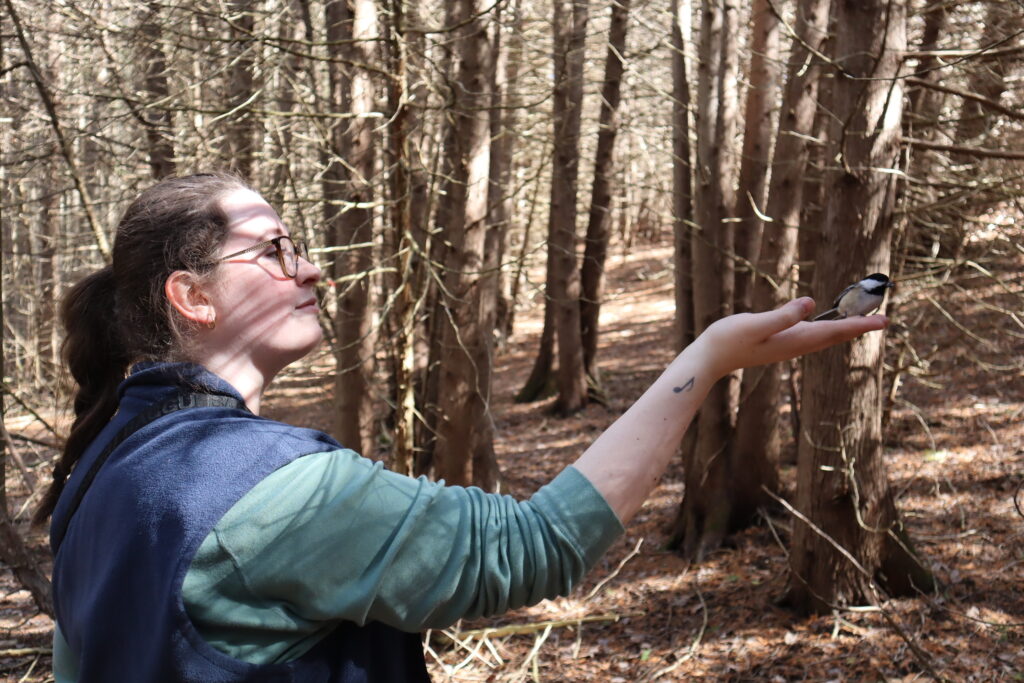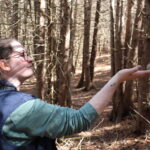At a Glance:
Pinnguaq’s new learning resource, called Akinomaage: Exploring Our Seasons, is helping learners and educators connect to their environment while discovering how science, technology, engineering, art and math (STEAM) can be found in nature.
We began developing Environmental Steward Kits a few years ago, to engage learners across the country, centering the relationship between technology and environmental stewardship. Akinomaage builds on this success.
Pinnguaq partnered with Ashley Wynne of Sage and Sunshine Culture-Based School in Peterborough, Ontario, to make a place-based (location-specific) version grounded in the language, traditional ecological knowledge and deeply-rooted relationships in and to the Kawartha Lakes region.
Through the resource, we:
“The really beautiful thing about this resource is that it’s meant for everyone: teacher, student, community helper, or any person looking to deepen their understanding of and connection to the natural world,” says Caitie Blumsom, STEAM Educator at Pinnguaq.
Guided by Inuit Qaujimajatuqangit (IQ) principles
The name “Akinomaage” comes from the Anishinaabemowin language where the first part of the title, “Aki” means Land or Earth. The second piece of the name refers to “moving in the direction of” or “returning to”.
“This idea of returning to the Land is such a beautiful way to describe this resource, as it really consists of little activities and experiments and opportunities to inspire wonder,” says Blumsom.
The book can build off of curriculum and conversations that are already happening, while providing a rich Indigenous Knowledge perspective and embracing Avattimik, a guiding principle of Inuit Qaujimajatuqangit.
According to Shirley Tagalik, in her writing about Inuit Principles of Conservation, Avattimik kamatsiarniq requires us to pay careful attention to the environment.
“The care and importance we place on this also impacts on our personal health and well-being. For all of these reasons, it is important to think about the environment we grow up in and how we become good caretakers and good contributors to a healthy and positive environment,” wrote Tagalik.
Connecting learners to their environment
Land-based learning is inherently place-based, Blumsom says, noting it doesn’t work to take a skeleton resource and apply it in communities across the province. With different climates, wildlife, flora and fauna, having a place-based resource enables us to build a deeper connection through the activities presented.

Akinomaage: Exploring Our Seasons feels personal to people from the Kawartha Lakes region and that connection, that sense of belonging, is a big step towards understanding and caring for our environment.
“Let’s use the bees as an example. If I’m spending time in the garden and a bee lands on me, how am I going to react? Why is this reaction different from how I would interact with a ladybug or butterfly? ‘Risk’ is a pillar of outdoor learning and my role as a facilitator is to guide learners through this process of understanding,” Blumsom explains.
“So, let’s explore bees – get to know them, their role in our ecosystem, and continue spending time with and around them. As learners confront this discomfort, their outlook changes. They begin to practice patience and bravery. Then, one day, a bee lands on a learner and they don’t react. They don’t throw their hands in the air or run away screaming. They sit quietly and patiently. They notice and observe. The more we understand about the land and the beings that reside here, the more we want to care for them; the more likely we are to practice reciprocity in these relationships.”
STEAM is everywhere
Learners can experience every element of STEAM without ever opening a device, simply by going outside and exploring.
With this resource, available upon request, learners are offered two activities per season to help them feel more comfortable with the land and environment. Whether it’s making snow candy, playing an avian migration game, extracting strawberry DNA or leaf pressing, the resource is packed with playful and intriguing ways to connect to this land, based on the seasons and their impact. This connection enables us to bring STEAM to life as we immerse ourselves in the natural world.
